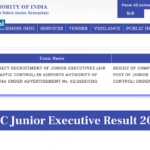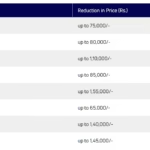Huawei, one of the pioneers in foldable smartphones, is once again set to revolutionize the market with the launch of two new flagship foldable devices – the Huawei Mate XT 2 and the Mate X7. Slated for launch in the second half of 2025 (H2 2025), these foldables are expected to push boundaries in design, display innovation, and seamless user experience. As competition heats up in the foldables segment with players like Samsung, Honor, Xiaomi, and OPPO stepping up their game, Huawei is ready to respond with powerful updates and bold hardware choices.
In this blog, we explore the key features, expected specifications, innovations, market context, and what consumers can expect from Huawei’s 2025 foldable offerings.
The Foldable Market in 2025: A Quick Snapshot
Before diving into the devices, let’s set the context. The foldable smartphone market has evolved dramatically over the last few years. No longer seen as just a niche or experimental category, foldables are gaining mainstream traction. According to market research reports, foldable phone shipments are expected to exceed 30 million units globally in 2025, led by innovations in hinge design, crease minimization, and software optimization.
Huawei has been at the forefront of this foldable wave since the launch of the Mate X series. Despite facing global supply chain challenges and sanctions, the company continues to thrive, particularly in the Chinese market, where its HarmonyOS and Kirin chipsets are gaining wide acceptance.
Huawei Mate XT 2: A Refined Outward-Folding Experience
Display & Design
The Huawei Mate XT 2 continues the legacy of outward-folding screens, a hallmark of the Mate X line. The device is expected to feature a 7.9-inch OLED panel when unfolded, offering a near tablet-like experience with edge-to-edge viewing. When folded, the device transforms into a compact 6.5-inch phone with minimal bezels.
Huawei is rumored to use an improved hinge mechanism that reduces visible creases and enhances durability. The company has likely worked on making the device thinner and lighter – a persistent demand among foldable phone users.
Performance
At its core, the Mate XT 2 is expected to run on the Kirin 9100 SoC, built on a cutting-edge 5nm or possibly 3nm fabrication process. This new chip, Huawei’s in-house development, should bring 5G support, AI improvements, and better thermal management.
The phone is likely to be offered in two RAM variants – 12GB and 16GB, with up to 1TB of internal storage, making it ideal for multitasking and professional use.
Cameras
The camera setup is where Huawei is expected to impress. The Mate XT 2 might feature a quad-camera system with a 50MP primary sensor, 40MP ultra-wide, 12MP telephoto with 5x optical zoom, and a ToF (Time of Flight) sensor for depth sensing. Huawei has been focusing on its imaging system and, despite lacking Google Mobile Services, has maintained a strong reputation in smartphone photography.
Huawei Mate X7: Inward-Folding Flagship with a Premium Touch
While the XT 2 caters to the outward-folding fans, the Huawei Mate X7 is reportedly an inward-folding foldable, similar in form to the Samsung Galaxy Z Fold series but with Huawei’s signature premium aesthetics.
Display & Usability
The Mate X7 will feature a main 8.0-inch OLED display inside and a 6.4-inch external cover display for quick tasks and notifications. Huawei is focusing on improving crease resistance and touch sensitivity, making the display feel more like a traditional smartphone screen.
The outer display will be LTPO-enabled, allowing for a variable refresh rate from 1Hz to 120Hz, saving battery while offering fluid visuals when needed.
Durability and Build
One of the key upgrades will be in durability. Huawei is rumored to use second-gen ultra-thin glass (UTG) and an aluminum-magnesia frame to reduce weight while boosting resistance to drops and pressure.
The Mate X7 is expected to be IPX8 water resistant, a first for Huawei foldables, bringing it on par with Samsung’s top offerings.
HarmonyOS 5 Integration
Both the Mate XT 2 and Mate X7 will launch with HarmonyOS 5, offering a tightly integrated software experience. The OS is expected to bring better multi-window management, drag-and-drop support, and cross-device collaboration with Huawei tablets, smartwatches, and laptops.
Battery Life and Charging
Both foldables are rumored to house 4500mAh to 5000mAh batteries, supported by 100W wired charging and 50W wireless charging. This is a significant improvement, ensuring the devices can be fully charged in under 40 minutes, with enough juice for all-day productivity.
Huawei may also include reverse wireless charging, allowing users to charge earbuds or other devices directly using the phone.
AI and Productivity Features
AI will play a central role in both phones. With the Kirin 9100 chip and HarmonyOS 5, users can expect:
- AI-assisted split-screen suggestions
- Gesture-based multitasking
- Smart stylus support (especially for the X7)
- Real-time translation & transcription
- Improved camera scene detection
The integration of AI makes these devices more than just hardware marvels – they become intelligent assistants for daily life and work.
Availability and Global Strategy
While Huawei’s global presence is limited due to U.S. trade restrictions, the company is likely to launch both devices first in China, followed by select markets in Asia, the Middle East, and Europe through partner networks.
Huawei may also offer non-GMS (Google Mobile Services) international variants with AppGallery and Petal Search, its in-house ecosystem that has grown significantly in the past few years.
Pricing is expected to start around:
- Huawei Mate XT 2: ₹1,29,999 (~$1,550)
- Huawei Mate X7: ₹1,49,999 (~$1,800)
Final prices may vary by market and configuration.
Consumer Expectations and Industry Reactions
Tech enthusiasts and reviewers are watching Huawei closely, especially with the company’s renewed push into high-end innovation. Initial reactions from industry insiders suggest that these devices could potentially outclass rivals in terms of display technology, build quality, and software cohesion.
Analysts also believe that with its tight ecosystem, Huawei might not need Google to succeed in many markets, especially as users begin to prioritize privacy, battery life, and unique form factors over app uniformity.
Final Thoughts
The Huawei Mate XT 2 and Mate X7 are shaping up to be landmark devices in the foldable space. With top-tier hardware, camera excellence, and refined software, Huawei is sending a clear message: it’s not backing down.
As H2 2025 approaches, all eyes will be on how these devices perform in the real world – not just as innovative gadgets but as practical tools for everyday users. Whether you’re a professional seeking multitasking potential or a tech lover craving cutting-edge design, Huawei’s upcoming foldables promise something truly exciting.
FAQs
Q1: Will the Huawei Mate XT 2 and Mate X7 support Google apps?
No, due to trade restrictions, Huawei devices do not ship with Google Mobile Services. However, AppGallery and Petal Search offer alternatives.
Q2: Which device is better – Mate XT 2 or Mate X7?
The Mate XT 2 is ideal for those who prefer an outward-folding display, while the Mate X7 caters to users who like the book-style inward-folding design. Both have top-tier specs.
Q3: Are these foldables durable?
Yes, both models are expected to feature upgraded hinges, ultra-thin glass, and water resistance (IPX8 for Mate X7).
Q4: When will the phones be available?
Huawei has confirmed a second half of 2025 launch, likely between August and October.
Q5: Will they be available in India?
Huawei has not officially confirmed Indian availability, but it’s likely they will arrive via online or third-party resellers.
Learn more about Huawei’s latest innovations on their official website.










